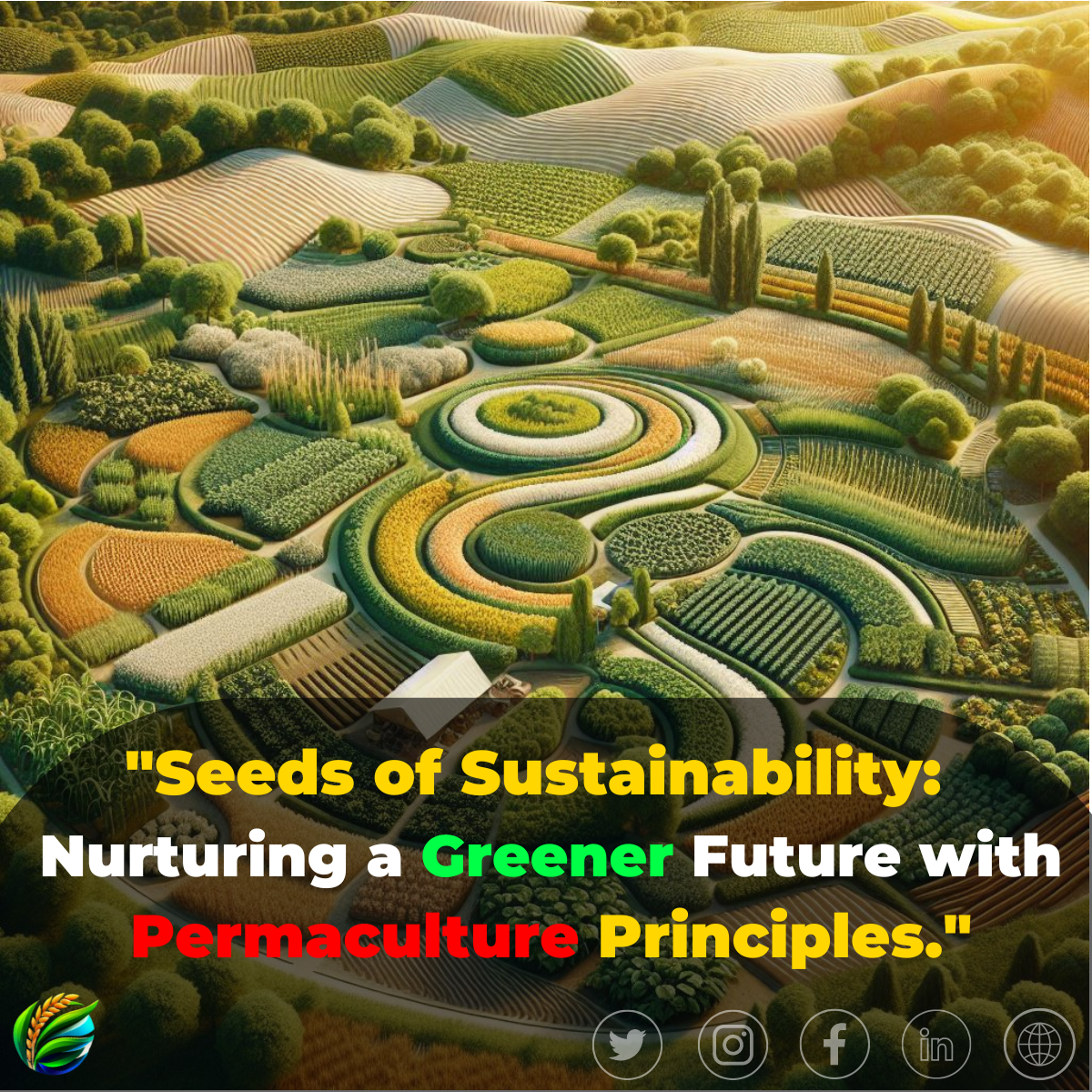Permaculture Principles: Designing Sustainable and Resilient Agricultural Systems
In a world where sustainable and regenerative practices are becoming increasingly vital, permaculture emerges as a guiding philosophy for designing agricultural systems that not only meet human needs but also restore and enhance the environment. Rooted in the principles of observation, integration, and thoughtful design, permaculture offers a holistic approach to farming that fosters resilience, sustainability, and a deep connection with the natural world.
Understanding Permaculture
1. Holistic Design Philosophy
Permaculture, derived from "permanent agriculture" or "permanent culture," represents a holistic design philosophy that goes beyond traditional farming practices. It was coined and developed by Bill Mollison and David Holmgren in the 1970s. The founders envisioned an ecological design system that mimics the patterns and relationships found in nature.
2. Ethical Foundation
At its core, permaculture is built on three ethical principles: care for the earth, care for people, and fair share (or return of surplus). These ethics guide every aspect of permaculture design, ensuring that the practices employed contribute to environmental health, human well-being, and equitable distribution of resources.
Key Permaculture Principles
1. Observation and Interaction
Permaculture begins with careful observation of the natural patterns and processes at a specific site. By understanding the land, climate, and existing ecosystems, farmers can design agricultural systems that work in harmony with the environment. Interaction with the land is then informed by these observations, allowing for a more responsive and adaptive approach.
2. Design for Multiple Functions
In permaculture, each element in the system should serve multiple functions. For example, a fruit tree doesn't just provide a harvest of fruits; it can also offer shade, habitat for beneficial insects, and contribute to soil health. This multifunctional approach maximizes the utility of each element within the system.
3. Use of Renewable Resources
Permaculture emphasizes the use of renewable resources, such as solar and wind energy, to meet the needs of the agricultural system. Harnessing these natural resources reduces dependence on non-renewable inputs, making the system more sustainable in the long run.
4. Integration of Diversity
Biodiversity is a cornerstone of permaculture design. By integrating diverse plants, animals, and microorganisms, permaculture systems become more resilient to pests, diseases, and environmental fluctuations. Companion planting, polycultures, and incorporating native species are common strategies.
5. Efficient Use of Energy
Permaculture aims to maximize energy efficiency by designing systems that require minimal inputs for maximum output. This involves thoughtful placement of elements to reduce the need for human labor, as well as the strategic use of natural energy flows.
6. Natural Patterns and Cycles
Permaculture design draws inspiration from natural patterns and cycles. By aligning with the inherent rhythms of the environment, such as water cycles, nutrient cycles, and succession patterns, permaculture systems become more harmonious and less prone to disruption.
Implementing Permaculture on the Farm
1. Food Forests
Designing food forests is a common permaculture practice. Mimicking natural forests, food forests integrate trees, shrubs, and ground cover plants in layers, creating a productive and biodiverse system that yields a variety of fruits, nuts, and vegetables.
2. Swales and Keyline Design
Water management is a critical aspect of permaculture. Techniques like swales (contour trenches) and keyline design help capture and channel rainwater, preventing soil erosion and promoting optimal water distribution for plants.
3. Companion Planting
Companion planting involves strategically placing plants that benefit each other when grown in proximity. Certain plants may repel pests, attract beneficial insects, or enhance soil fertility when grown together.
4. Perennial Agriculture
In contrast to annual monocultures, permaculture often incorporates perennial plants that endure for many years. This reduces the need for frequent replanting and promotes long-term soil health.
Conclusion: Cultivating Harmony with Nature
Permaculture principles offer a roadmap for creating agricultural systems that are not just productive but also regenerative. By observing and understanding the natural world, integrating diverse elements, and designing for sustainability, farmers can cultivate a harmonious relationship with the land. As we face the challenges of climate change and environmental degradation, permaculture stands as a beacon, demonstrating that agriculture can be a force for positive change, nurturing both people and the planet.
In the journey towards sustainable and resilient agriculture, permaculture principles provide a guiding light, inviting farmers to be stewards of the land and architects of a more regenerative future.
For more insights into sustainable farming practices and agrotech innovations, stay tuned to Agrotech Daily.









